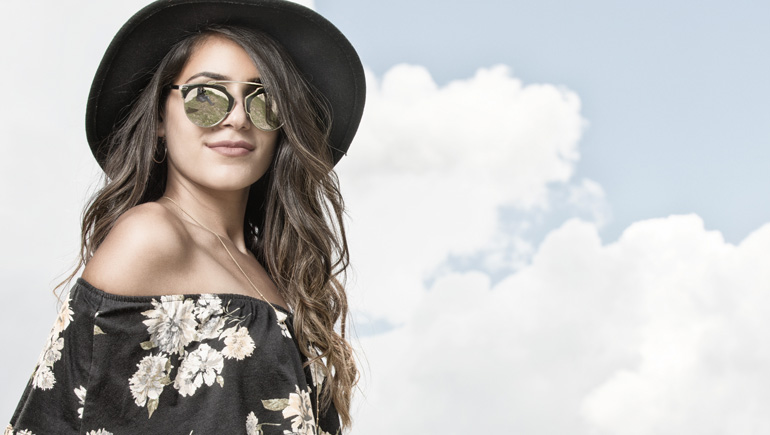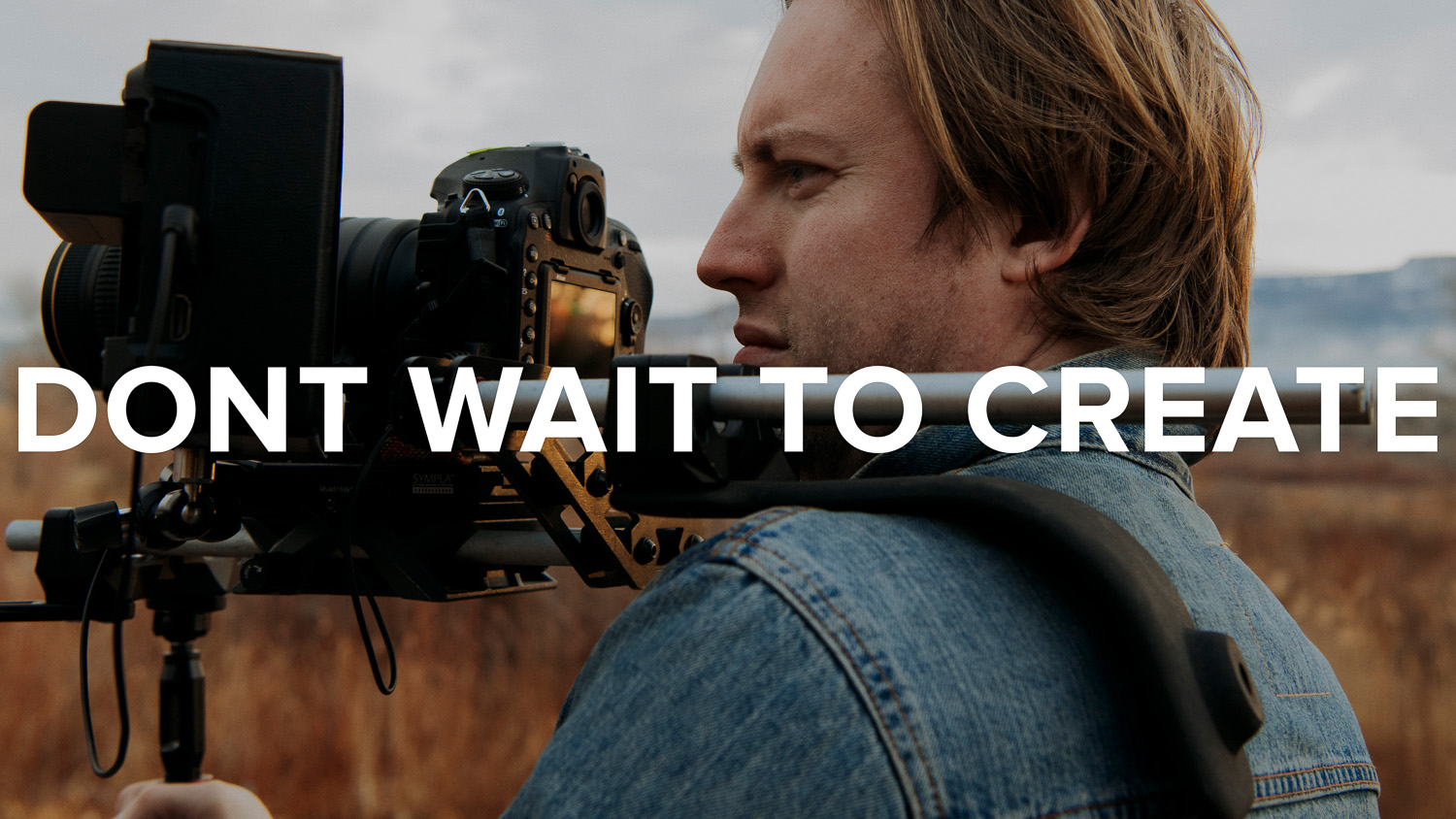Thanks for coming by. It’s #HybridDaveTuesdays here at ScottKelby.com once again, and this week to keep in theme with the money-related posts from the past few weeks, I’m going to cap it off with one more – the value of you! My intention is to give you a gentle reminder of just how much you’re worth as a photographer, or other creative, and why.
So, here’s what happens: That gripe we all have surfaces – we moan endlessly as photographers about being approached by people and asked to shoot something for nothing. The phrase, “you can use it for your portfolio” seems to be the favourite. On social forums, we share our experiences and offer advice, usually in the form of a rant, and rage about how a plumber doesn’t work for free so why should people expect us to? Well, here’s something that also happens: we’re approached by a prospective client, who maybe is a friend of a friend, and rather than pitching a price we’ll say, “yeah, I’ll shoot that for you for nothing.” It’s true, I’m afraid. We’re our own worst enemies! The reason we get the “will you do it for free?” question is because we will. We will do it for free, for a friend, for our portfolio, for the recognition, or for the foot in the door. It’s a two-way street and a causal factor to the questioning pitched is our willingness to impress and say yes.
It’s a big world out there, and there’s a lot of competition. It’s true that when it comes to hiring a photographer you get what you pay for. Take it to another market – airlines. If I fly from London to Canada on WestJet I’m getting a bargain price, but I’m not getting fed, not getting a baggage allowance, not getting a high-quality entertainment console, and likely not getting much legroom. If I splash some more cash, I can tap up British Airways and get a meal or two, a suitcase, a range of movies, and my knees are probably not going to be up by my ears. Lenses – Do I want the one I found on eBay for fifty bucks, with innards made of warped plastic and sealing so bad it turns into a flask when it rains? Or should I spend that little bit more for the Canon lens made of real glass, weather sealed to the max, and accompanied with a guarantee to boot? I know the answer, you know the answer, so why do we undervalue ourselves? Why do we cause the very problem, as an industry, that we complain about?
It’s important that we value ourselves. Give the value of you, and give yourself value. Here’s an example: If you shoot weddings, you can command £10,000 for what is, tangibly, almost the same thing as you’d be giving someone for £1,000. It’s the same hours, the same venue, the same “models,” and most likely, not a dissimilar album or online gallery received at the end of it. Sure there can be some differences, but essentially it’s not far from being the same thing. So, how do you arrive at charging £10,000? Well, it’s in the value of you!
The intention of this blog post is not to deliver a class in how to price yourself as a photographer or creative, it’s to point you in the right direction to setting the highest price you can achieve. Whether you set your price per hour, per image, or per job, it makes no difference to setting a true value for yourself and your ability. The difference it does make, however, is between being able to pay your bills or not!
I quickly learned when starting out in photography that the repeat customer is crucial to stability. I wanted to make sure that if I had a client book me for a corporate shoot that they wanted me again for the next one. I wanted to make sure that if I shot a wedding I was noticed by the guests to shoot their upcoming weddings and their families and friends, too. And I did just that, all because I valued myself and, even after occasionally knocking off 10% to seal the deal, I set my price as a true reflection of what I was able to deliver and the quality of my images.
That relates now, too. With agencies contacting me and asking for quotes, I must ensure I set the figure correctly. One example is this:-

I got a brief from Mars UK at the beginning of December to shoot a situational product shot – a box of their chocolates and a Christmas tree. The brief was a couple of pages, but that’s essentially what they were asking. I went and got the product, took the shot, composed my offer price and submitted the lot. They got what they wanted, and they loved the shot. My entry price was £120 – it reflected the expenses I had incurred, the time I had used, the engagement the photo was likely to receive, and ultimately it reflected my value. The thing is, alongside saying that they loved the shot, the client also asked me to reduce my fee to £50. £50! They said they had a limited budget and wanted to get as many influencers on board as possible. The industry guidance for the reach I get, and the audience due to see my photos in this arena, says that I should be charging £100-180 per photo. I landed at the lower end of this figure with the mindset at the time that it’s Christmas, I need Christmas photos anyway, and although it was work, it wasn’t exactly hard work. To then get a slap-in-the-face £50 offer, totally devaluing me, it’s probably obvious how this story ends, but I’ll tell you anyway: suffice to say, I never posted that shot. You may be wondering why I turned down £50. Here’s why:-
When you give something to a client for cheap or free because they have a small budget, what happens on their next job when they have a large budget? Let’s say you are the one who says yes and accepts the small budget fee, and they also ask me but I say no. I tell them that’s not enough; I’m worth more than that. Just as soon as their large budget job arrives, and they’re looking for photographers to fulfill the job, is it you who they remember for shooting cheap? No, it’s me they remember – I’m the one that commands the right price and has the tenacity to turn down the wrong price. So, in their eyes, I’m the one that’s worth spending the bigger bucks on. I’m the expensive guy. I must be better, right? Finally, flip it around and think of it from a client’s point of view: if you pay me well, I’ll want to do a great job, and keep coming back to do more great jobs in the future.
If you want to take a look in detail at how to conduct yourself business-wise in the world of photography, I’d totally recommend watching Tim Wallace’s class on KelbyOne.com. But, for now, I hope I’ve provoked your thoughts just a little, and that you’ll take a look at whether you really are reflecting the value of you when you set your price!
Much love
Dave





Great post Dave! I hope many people read this and learn from it. You did well in refusing the £50 from Mars UK. A customer that buy just based on the cheapest price is never our customer – unless you keep being the cheapest one on the block – and if you do, be ready to find fierce competition from others even cheaper than you, that in the end will drive all out of business. Well done Dave!
Been saying this for years. Have told customers “If you have a bad, cheap looking photo of your product, then you must have a bad, cheap product. The ad for your product has one chance to make a great first impression, don’t blow it”. Got some customers using that line of thinking, lost some customers also. But the ones I lost, their product also seemed to disappear from the market.
Hi, Dave. You mention “industry guidance” you received for the Christmas candy shot you did. Can you elaborate a bit on this guidance, what is it, where does one go to seek it out? Thanks!
That shook me up a little, Dave. Thank you!! I have been thinking this when someone asks me to “just take a quickie photo – I only need a picture of myself for a business card.” Really….? And you want what??? Free?? I’m a woman photographer and perceived as a dilettante in this business. I’ve spent many years learning and honing my skills. I loved your article – and can’t say enough about valuing oneself. Sue Bryce is great at shoring us up about this as well. Kudos to both of you!
I’m glad you liked it, Dolores :)
I used to be one of those people who would rant about folks wanting something for nothing. Exposure doesn’t pay my bills. At least not yet.
There are some who get a lot of money for exposure. I recently learned that the performers for the Super Bowl don’t get paid by the NFL. Yes, the league will cover the production costs (which could be millions), but the performers don’t get paid. They’re doing that big show for the exposure, often in advance of a new album and potential major concert tour. So there are times when exposure does pay off, but only if you are ready to use it to promote something else.
While I’ve given images away in the past for some to use, it was at my discretion. Recently, I sold a photo twice to the same customer who had two difference needs. One was to use on a web page, and I charged a couple hundred bucks. The other was for their conference materials and signage. I charged a couple thousand for that, and the client agreed on my first brief.
I have a pricing methodology and I explain it to potential customers. It works better than just tossing out a number that they don’t understand, and I find that we both agree without much back and forth.
That sounds like a good tactic to skip the negotiation, William. Must make things so much simpler!